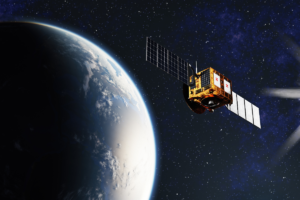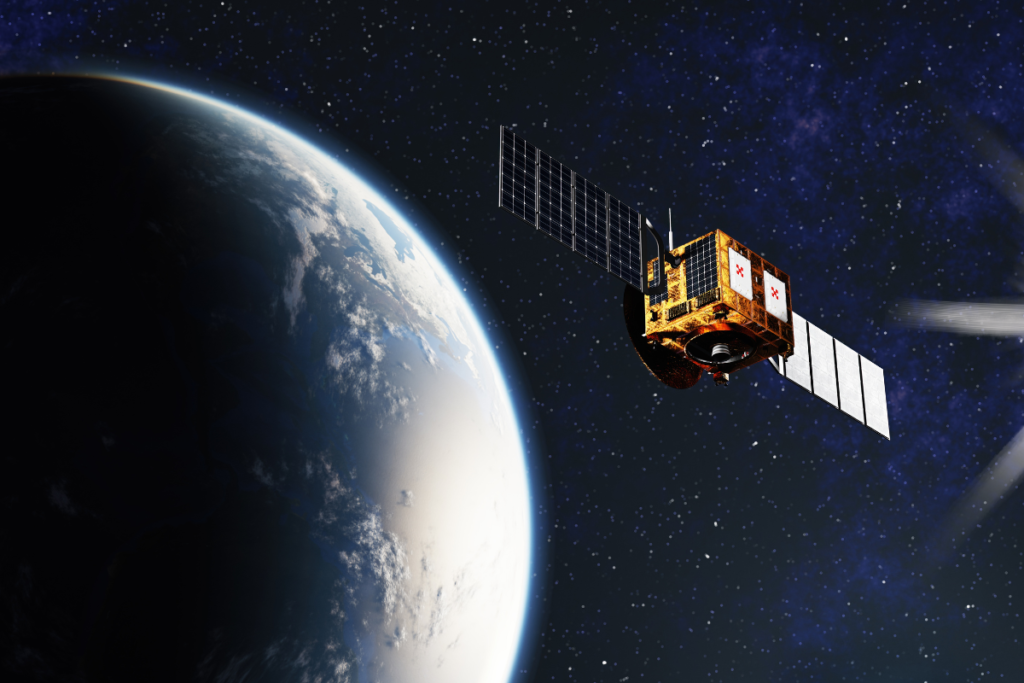Introduction
Ever wonder how your GPS knows exactly where you are, or how you can watch live broadcasts from halfway across the world? The answer lies above us—satellites orbiting Earth. But these aren’t just any orbits; many of the Satellite is in a Circular Orbit, a type of path that keeps them whizzing around the Earth with precision and stability. In this article, we’ll dive into what it means for a satellite to be in a circular orbit, the science behind it, and why it’s so crucial for the technologies we rely on every day.
Understanding Orbits
What is an Orbit?
An orbit is a curved path that an object takes around a star, planet, or moon, primarily due to the gravitational pull of the larger body. In our case, a satellite’s orbit around Earth is dictated by the Earth’s gravity pulling it inward while its momentum keeps it moving forward.
Types of Orbits
Orbits come in different shapes, but the two most common types are circular and elliptical.
Circular Orbits
A circular orbit means the satellite stays at a constant altitude from the Earth’s surface. The distance between the satellite and the Earth’s center remains the same throughout its journey, creating a perfect circle around our planet.
Elliptical Orbits
In contrast, an elliptical orbit is more of an oval shape. The satellite’s distance from Earth varies, sometimes bringing it closer and at other times pushing it farther away.
Why Satellites Use Circular Orbits
You might be wondering, why opt for a circular orbit over an elliptical one? The answer lies in stability and predictability.
- Stability and Predictability: In a circular orbit, the satellite’s speed and altitude remain constant, which simplifies tracking and communication.
- Fuel Efficiency and Lifespan: Circular orbits also tend to be more fuel-efficient. Since there’s no variation in speed or altitude, the satellite doesn’t need to constantly adjust its position, conserving fuel and extending its operational lifespan.
The Physics Behind Circular Orbits
Gravitational Forces at Play
At the heart of any orbit lies the delicate balance of forces. Gravity pulls the satellite towards Earth, while the satellite’s forward momentum tries to fling it into space.
- The Role of Earth’s Gravity: Earth’s gravity acts as the central force keeping the satellite in orbit, much like a tether keeping a ball spinning around your hand.
- Centripetal Force and Satellite Motion: The centripetal force is the “center-seeking” force that keeps the satellite moving in a circular path rather than veering off into space.
The Balance of Forces
For a satellite to stay in a stable circular orbit, its speed and altitude must balance Earth’s gravitational pull perfectly.
- Orbital Speed and Altitude: The closer a satellite is to Earth, the faster it needs to travel to resist being pulled down by gravity. Conversely, a satellite further out can move more slowly.
- The Concept of Freefall in Orbit: Surprisingly, satellites are in a constant state of freefall towards Earth. But because they have enough forward velocity, they keep missing it, resulting in continuous orbit.
#AIApforInterview #AIAccounts #OrbitingSpaceStation #RemoteSatellite
How Satellites Maintain Their Orbits
Launching a Satellite into Orbit
Getting a satellite into orbit isn’t just about sending it high into the sky; it’s about achieving the right speed and trajectory.
- The Role of Rockets: Rockets provide the necessary thrust to break free from Earth’s gravitational pull and reach the desired altitude.
- Achieving the Correct Velocity: Once in space, the satellite must hit the right speed to stay in a circular orbit. Too slow, and it will fall back to Earth; too fast, and it will escape into space.
Maintaining Orbit Over Time
Once a satellite is in orbit, it’s not a “set it and forget it” situation. Various factors can influence its path, requiring adjustments.
- Atmospheric Drag and Orbital Decay: Even at high altitudes, trace amounts of atmospheric particles can slow down a satellite, causing its orbit to decay over time. Small thrusters onboard the satellite can fire to boost it back into position.
- Adjustments and Corrections: Ground control teams continuously monitor satellites, making necessary corrections to keep them on track, especially when they encounter obstacles like space debris.
Applications of Satellites in Circular Orbits
Communication Satellites
Satellites in circular orbits play a critical role in global communication networks.
Geostationary vs. Polar Orbits
- Geostationary Orbits: These are circular orbits positioned over the equator, where the satellite appears stationary relative to a point on Earth. They’re perfect for communications, broadcasting, and weather monitoring.
- Polar Orbits: These satellites pass over the Earth’s poles, allowing them to scan the entire globe as the Earth rotates beneath them. They are commonly used for environmental monitoring and reconnaissance.

A Satellite is in a Circular Orbit About the Earth
Earth Observation and Weather Satellites
Satellites in low circular orbits are ideal for taking high-resolution images of Earth’s surface, making them invaluable for weather forecasting, environmental monitoring, and even disaster management.
Navigation Satellites (GPS)
GPS satellites, which are crucial for navigation, are also in circular orbits. This ensures they provide consistent and reliable positioning data across the globe.
Challenges of Keeping Satellites in Circular Orbits
Space Debris
One of the biggest threats to satellites in circular orbits is space debris—bits of old satellites, spent rocket stages, and other fragments orbiting Earth. Collisions with debris can damage or even destroy a satellite.
Orbital Drift and Its Corrections
Even in a circular orbit, a satellite isn’t immune to drift. Minor gravitational influences from the Moon, Sun, and other celestial bodies can cause a satellite to shift from its intended path. Regular adjustments are necessary to keep it on course.
Satellite Collisions and Avoidance Maneuvers
With the increasing number of satellites, the risk of collisions has grown. Satellites must sometimes perform “avoidance maneuvers” to dodge incoming debris or other satellites.
Future of Satellite Orbits
Advancements in Satellite Technology
The future of satellites in circular orbits looks promising with advancements in technology.
- Smaller, More Efficient Satellites: The trend is moving towards smaller, more efficient satellites that can be deployed in constellations, offering broader coverage and redundancy.
The Role of AI and Automation
AI is playing a growing role in satellite operations, from autonomous collision avoidance to optimizing orbital paths and managing satellite constellations.
The Future of Circular Orbits in Space Exploration
Circular orbits will continue to be a cornerstone of space exploration, whether for scientific missions, Earth observation, or communication networks.
Conclusion
Satellites in circular orbits are the unsung heroes of our modern world. They provide the backbone for communication, navigation, weather forecasting, and much more. Understanding how these orbits work, the forces involved, and the challenges they face gives us a deeper appreciation for the technology that powers our daily lives. As we continue to explore the cosmos, the role of circular orbits will remain vital, guiding the way for future generations of satellites.
FAQs
- What is the difference between a circular and elliptical orbit?
- A circular orbit maintains a constant distance from the Earth’s center, while an elliptical orbit varies in distance, bringing the satellite closer and then farther from Earth in a more oval-shaped path.
- How do satellites stay in orbit without falling to Earth?
- Satellites stay in orbit because they have the right velocity to balance Earth’s gravitational pull. They’re essentially in a continuous freefall around the Earth, but their forward momentum keeps them from crashing down.
- What happens if a satellite’s orbit starts to decay?
- If a satellite’s orbit decays, it gradually gets closer to Earth, eventually burning up in the atmosphere or, in some cases, crashing down to Earth. To prevent this, satellites are often equipped with thrusters to adjust their orbit.
- Why are geostationary satellites in circular orbits?
- Geostationary satellites are in circular orbits because it allows them to stay in a fixed position relative to a point on Earth, making them ideal for consistent communication and broadcasting.
- Can a satellite change from a circular to an elliptical orbit?
- Yes, a satellite can change its orbit by adjusting its velocity and direction. This maneuver is usually done using onboard thrusters and is carefully calculated by ground control.


